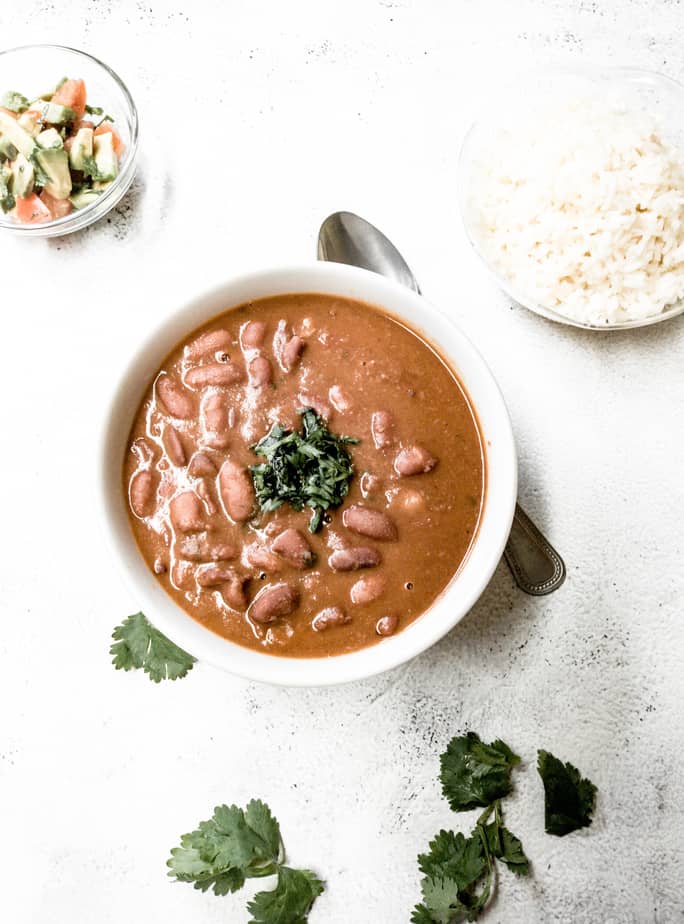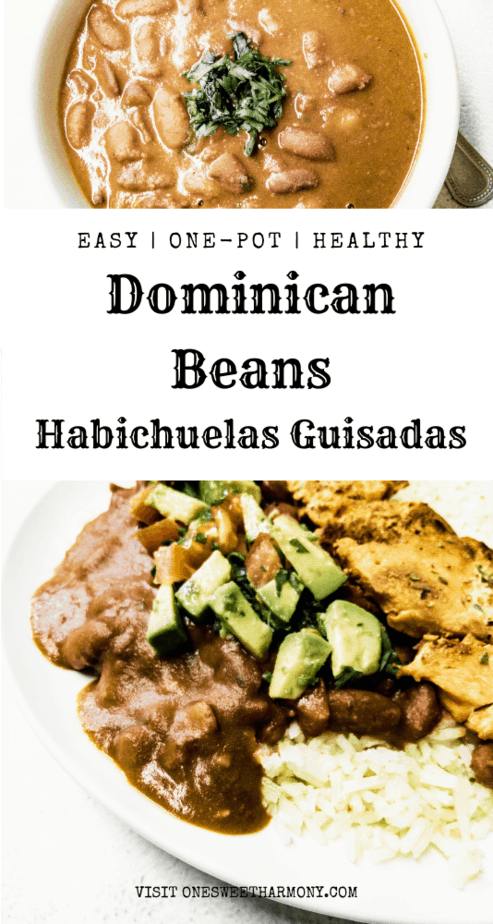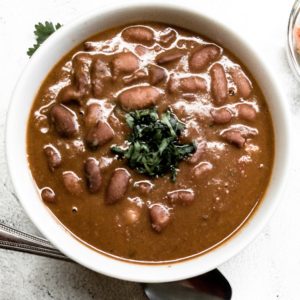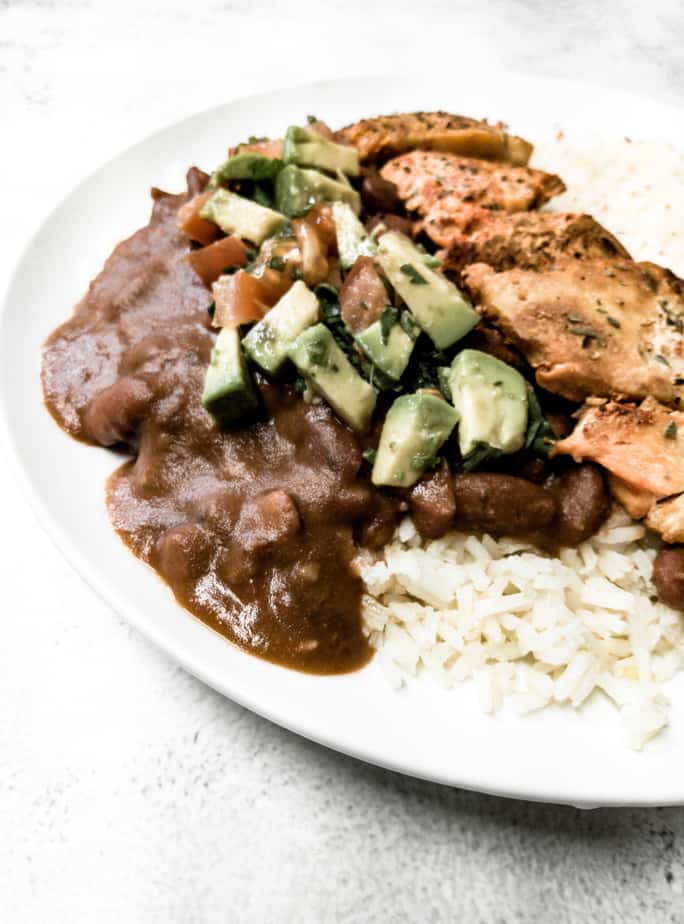Habichuelas Dominicanas, the traditional Dominican Beans Stew is one of the dishes that you will find in every household every other day. Married to a Dominican family this was one of the dishes that I learned first because it was so tasty and easy to make it. And I wanted to make my husband happy and proud. Well, I’m sure he does now.

I always liked to make Hungarian Bean Soup, actually, that’s one of my favorite Hungarian dishes, but otherwise, I never considered beans special. But not anymore… Now, I am really proud that I know how to make it.
Table of Contents
The traditional Dominican Beans are the perfect comfort food.
Rice and beans are one of my favorite comfort food. You can make it two different ways, one of them the easy old-school way, and the other one, is from scratch, what I am showing you in this post.

Now, I know that not every day we have the time to soak the beans, then boil them until they are soft. I don’t say it aloud, but in these cases, you can use canned beans. I use sometimes canned beans but it’s really rare! The truly traditional way is with real hard beans, soaked in the water at night time.
So, the recipe. Please, make sure you’ll subscribe to my Youtube Channel and Follow me on Instagram and Facebook. It means so much to me and gives me some motivation to prepare more posts and videos for you. (If you click on them, will straight take you to the profiles). Thank you!

Dominican Beans
Ingredients
- 1 lb red kidney beans
- ½ onion
- ½ green bell pepper
- cilantro
- 1 little can tomate paste
- 2 chicken bouillon cubes
- 5-6 garlic cloves
- salt seasoning to taste
- water
Instructions
- Bring the beans to boil until is soft and tender. Approximately 15 minutes. Then put the onion, green bell pepper and cilantro in it, and let it cook for 10 minutes.
- Cut the garlic in little pieces, and put it in a garlic masher. Put one tablesoop of salt in it too, and mash it as good as you can. Bring a little oil in a pan and also put the garlic in it until is golden brown.
- Put the garlic paste inside the beans. Put the chicken bouillon cubes, the tomato paste and the salt seasoning to taste.
- Bring one cup of beans with liquid to a mixer an mix it well. Then put the result back to the beans. This paste will thick the liquid.
- After this, just taste it if needs more salt and le it ON for 10 more minures.
Video

Frequently asked questions
- What do you eat with Dominican Black Beans?
One of the most common is Rice and Beans. And you can use any meat or if you are vegan or vegetarian you can make whatever you wish. I have to mansion the concon from the white rice, that’s just one of my favorite. That’s the crispy “burned” rice from the bottom of the pot.
- What is the difference between Frijoles and Habichuelas?
They both mean the same thing. BEANS. In Mexico call it Frijoles and in the Dominican Republic or Puerto Rico, they call it Habichuelas.
Please, check out my other Dominican dish called Locrio de Pollo. Is the other traditional Dominican food with rice and chicken, that will make you eat it all.

Leave a Reply